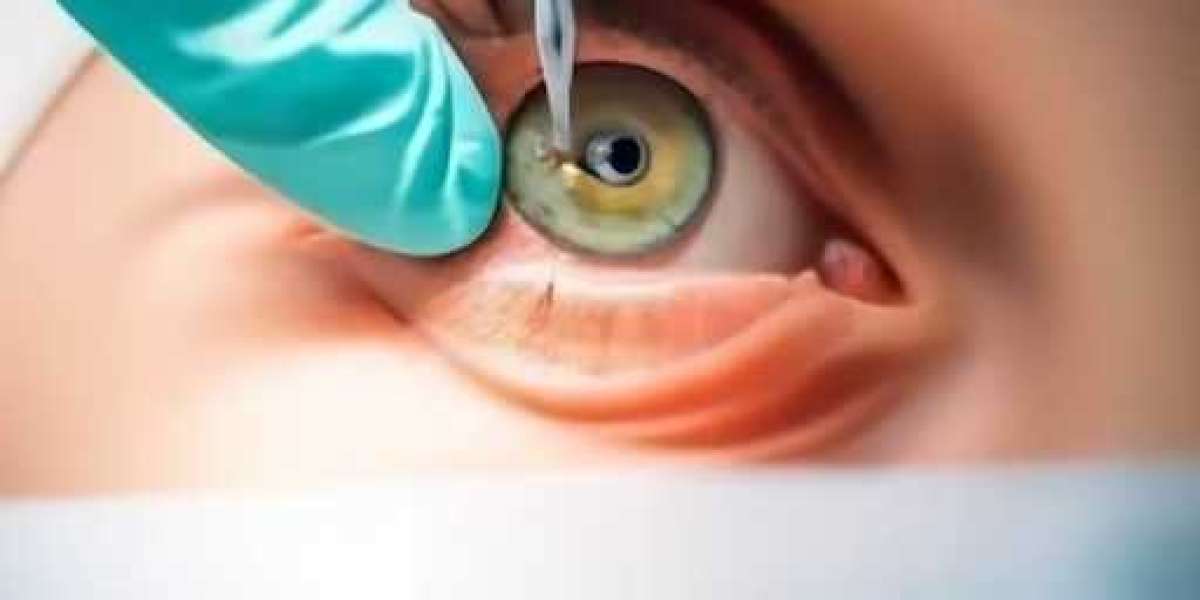LASIK surgery has transformed vision correction, providing millions with clearer eyesight and freedom from glasses or contact lenses.
While the procedure is highly effective, some patients experience visual disturbances known as higher-order aberrations (HOAs) after surgery. These optical imperfections can cause night vision problems, glare, halos, and reduced contrast sensitivity. Understanding why HOAs occur and how to manage them can help individuals make informed decisions about LASIK and postoperative care.
What Are Higher Order Aberrations?
Higher-order aberrations (HOAs) are subtle visual distortions that affect the quality of vision, particularly in low-light conditions. Unlike common refractive errors such as nearsightedness, farsightedness, or astigmatism, corrected with glasses, contact lenses, or LASIK, HOAs involve complex irregularities in the eye’s optical system. These distortions can lead to symptoms such as starbursts, halos, and difficulty seeing in dim environments.
How Does LASIK Cause Higher Order Aberrations?
LASIK reshapes the cornea to correct refractive errors, but in some cases, the procedure may introduce or worsen HOAs. This occurs because LASIK involves creating a corneal flap and using a laser to remove microscopic layers of tissue. If the corneal shape is altered unevenly or healing does not occur ideally, it can lead to optical imperfections. While modern laser technology has significantly reduced the chances of HOAs, some individuals may still experience these visual disturbances.
Common Symptoms of Higher Order Aberrations
Patients with higher-order aberrations often report experiencing one or more of the following visual disturbances:
- Halos and Glare: Bright rings around lights, particularly at night, making driving difficult.
- Starbursts: Light sources appear to radiate outward in multiple directions.
- Reduced Contrast Sensitivity: Difficulty distinguishing between objects in low-light conditions.
- Ghosting or Double Vision: Faint secondary images appear next to the primary image.
- Light Sensitivity: Increased discomfort when exposed to bright lights.
Are Higher Order Aberrations Permanent?
In most cases, HOAs improve over time as the eyes heal and adjust after LASIK. The brain also adapts to minor visual distortions, making them less noticeable. However, for some individuals, these aberrations may persist longer than expected. In rare cases, additional treatments may be needed to improve visual quality if the irregularities are significant.
Who Is at Higher Risk of Developing HOAs After LASIK?
Several factors increase the likelihood of experiencing higher-order aberrations after LASIK, including:
- Large Pupil Size: Individuals with larger pupils may experience more pronounced HOAs, especially in low-light conditions.
- Thin Corneas: If the cornea is thin, the reshaping process may not be as precise, leading to visual distortions.
- Pre-existing Aberrations: Some people naturally have HOAs before LASIK, which can become more noticeable after surgery.
- Healing Variability: Each person heals differently, and uneven healing can contribute to irregular corneal surfaces.
- Older LASIK Technology: Older laser systems were less advanced in minimizing HOAs. Modern wavefront-guided LASIK has reduced this risk significantly.
How Can HOAs Be Diagnosed?
Higher-order aberrations can be detected using advanced diagnostic tests such as wavefront analysis. This test maps the eye’s optical system and identifies distortions that affect vision. Wavefront-guided technology has also been incorporated into modern LASIK procedures to minimize the risk of postoperative aberrations. If a patient experiences persistent night vision problems or other symptoms, an ophthalmologist can perform these tests to determine the cause and possible solutions.
Can HOAs Be Treated After LASIK?
Several options are available to manage and reduce the impact of higher-order aberrations after LASIK. Treatment depends on the severity of the symptoms and the underlying cause of the visual disturbances.
Wavefront-Guided Enhancements
For patients experiencing significant HOAs, a follow-up laser enhancement procedure may help smooth out irregularities in the cornea. Wavefront-guided LASIK or PRK can be performed to address these issues and improve visual quality.
Specialized Contact Lenses
Custom-designed rigid gas permeable (RGP) or scleral lenses can help reduce the effects of HOAs by providing a more uniform refractive surface. These lenses are often recommended for individuals who do not want additional surgery.
Eye Drops and Lubrication
Dry eyes can exacerbate visual distortions, making HOAs more noticeable. Preservative-free artificial tears and medicated eye drops can help improve tear film stability and reduce symptoms.
Pupil-Reducing Eye Drops
Some patients with large pupils may benefit from special eye drops that constrict pupil size, reducing the effect of HOAs in low-light environments.
Glasses with Anti-Reflective Coating
For those who experience glare and halos at night, glasses with anti-reflective coatings can help minimize discomfort during nighttime activities such as driving.
Can HOAs Be Prevented During LASIK?
Modern advancements in LASIK technology have significantly reduced the likelihood of higher-order aberrations. Wavefront-guided and topography-guided LASIK procedures create customized treatment plans based on each patient’s unique eye structure. Choosing an experienced surgeon who uses the latest technology can further minimize the risk of postoperative visual distortions.
How Long Do Higher Order Aberrations Last?
For many patients, HOAs improve within a few weeks or months as the eyes heal and adapt. Mild cases often resolve on their own without the need for additional treatment. However, symptoms may persist longer in some cases, requiring further evaluation and possible intervention. Regular follow-ups with an ophthalmologist ensure that any issues are addressed promptly.
Should You Be Concerned About HOAs Before LASIK?
While the possibility of developing higher-order aberrations exists, modern LASIK techniques have greatly minimized these risks. Discussing pre-operative testing, pupil size, and corneal thickness with a qualified LASIK surgeon can help determine if you are at a higher risk. Understanding the benefits and potential side effects allows patients to make an informed
Higher-order aberrations (HOAs) are an uncommon but possible side effect of LASIK surgery. While they can cause temporary visual disturbances such as glare, halos, and reduced contrast sensitivity, most cases improve with time as the eyes heal. Advanced LASIK technologies have significantly reduced the occurrence of HOAs, making the procedure safer and more effective.
If HOAs persist, treatments such as wavefront-guided enhancements, specialized contact lenses, and eye drops can help improve visual quality. Consulting an experienced ophthalmologist before and after LASIK ensures the best possible outcome and long-term vision satisfaction.








